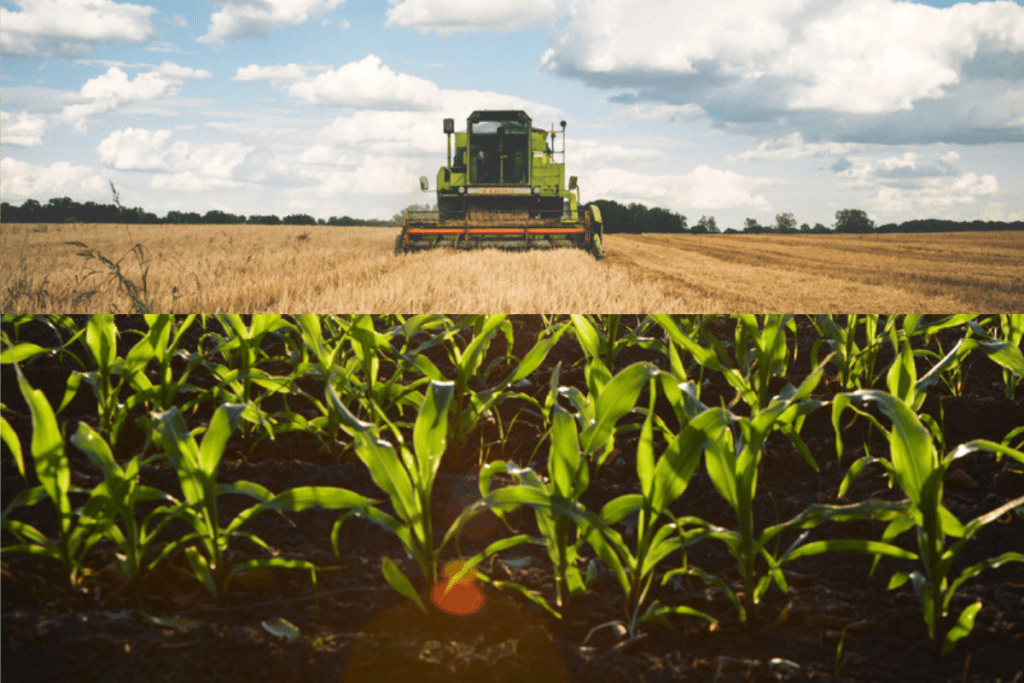India is an agrarian economy, and in excess of 54% of the land, the territory is considered. India is among the world’s driving makers in volume for different products like rice, wheat, cotton, organic products and vegetables and dairy. Agribusiness and related areas, for example, ranger service and fisheries, represent 16% of GDP; however, this has been declining since 1991. Farming related occupations, remembering those for the material area, generally represent 50% of India’s work market. Subsequently, the farming area assumes a significant part in Indian financial aspects, parliamentary issues, and society.
Indian farming creation for food staples is especially stormy. Farm yields are, for the most part, under the world average. Numerous variables bring about this low efficiency: massive unofficial law, failure in the food circulation framework, helpless foundation (which brings about post-gather misfortunes of up to 40 per cent for specific items), absence of accessibility and mindfulness in the utilization of present-day agrarian practices and advances, shifting climate, small average farm sizes (2.7 sections of land/1.08 hectares and contracting), and homegrown agribusiness support projects and support that mutilate market signals and hamper usefulness upgrading speculation.
India has created power in certain items throughout the long term, making it the world’s fourteenth biggest horticultural, fishery, and ranger service item exporter. In 2019, India accumulated an $8.25 billion exchange excess of farming, fishery, and ranger service merchandise. Driving fares comprised Basmati rice, carabeef/meat of ox-like creatures, frozen shrimp and prawns, cotton, and refined sugar.
Commodity Trade
- Cotton
India is one of the biggest makers and exporters of cotton globally. In any case, India will keep on bringing in extra-long staple (ELS) and quality long-staple cotton (28-34 mm), with intermittent imports of medium staple cotton when global costs are great. The United States has been included as one of the main providers of cotton to India in the course of recent years. U.S. cotton fares to India in schedule year CY 2019 were estimated at $587 million, the most elevated on record. Imports from the United States have kept up around 49% of the overall industry of complete ELS cotton brought into India since 2011. Other significant cotton providers include Australia, Egypt, the Commonwealth of Independent States, and West Africa. Indian plants that import U.S. Pima (a brand name for ELS cotton) and upland cotton are keen on its predominant quality, consistency, higher ginning yield and yarn acknowledgment.
- Fresh fruits
India gives market admittance to most new organic and fresh products. With a developing portion of shoppers demanding great norms and all year accessibility, there is an expanding interest in imported new organic products. Imports of U.S. new organic and fresh fruits (generally apples, pears, and table grapes) into India in 2019 were estimated at $62 million, with apples having the most elevated piece of the pie at $56 million, which was lower than a year prior volumes by 64%. This is because of India’s expansion in duties forced on apples from 50% to 70 per cent in June 2019 in reprisal for U.S. steel and aluminium taxes. By and large, market sources expect imports inside the new organic products section to continue showing development throughout the next few years, with unique items expected to enter the Indian market.
- Pulses
India is the world’s biggest maker, customer, and merchant of pulses (peas, lentils, and beans), with yearly imports going from 3.8 – 6.99 million tons during CY 2012 to 2017. In the Calendar Year, 2017 imports arrived at a record 6.99 million tons ($3.9 billion USD), generally from Canada, Myanmar, Australia, Russia, China, and the United States. Two successive record homegrown harvests of pulses in 2016/17 and 2017/18 brought about nearby pulses costs slamming in mid-2017, which caused farmer distress in significant pulses developing states. Therefore, since March 2017, the GOI has taken a progression of measures to confine imports of pulses: they have raised the import obligations on different pulses from zero to 30-60 per cent and forced quantitative limitations (QRs) on imports of significant pulses. Subsequently, India’s pulses imports in CY 2018 declined to 2.39 million tons and recuperated somewhat to 3.22 million tons in 2019, altogether lower than the pre-import limitations period antagonistically influencing the worldwide market since late 2017.
Leading Sub-Sectors
Agriculture Machinery
India is the biggest tractor market on the planet. It is assessed that work vehicle creation in India represents around 35% of the worldwide creation volume. The 31-50 hp class is the biggest market fragment. Complete work vehicle deals developed by 10.24 per cent to 878,476 units in 2019. Nonetheless, the use of work vehicles is low contrasted with other driving economies of the world since the normal size of homesteads in India is under three sections of land. Despite the fact that work vehicles are the centre of farm automation, farm creation has gone far past just using farm trucks. The key development drivers for tractors will be farmers supplanting old tractor with new energy productive ones like Sonalika 35, the development of tractors in low work vehicle thickness locales, for example, Jharkhand, Rajasthan, Madhya Pradesh and different areas in the country where the use of farm trucks have been low because of components, for example, marsh holding, farm power/diesel, account, and non-farm utilizations, for example, haulage in the development and street building area. A more grounded accentuation is currently on expanding efficiency by moving away from customary farming techniques to receiving other controlled hardware and executes, subsequently turning into an excellent driver of development in this area. Likewise, the Indian government is attempting to give simpler admittance to credit to farmers by creating farmer agreeable approaches lined up with the new and developing pattern of cooperative farming in India.
We hope this is adequate information about Indian Agriculture Sector. For more information about agriculture or Indian Sector, stay connected with Tractor Junction.

